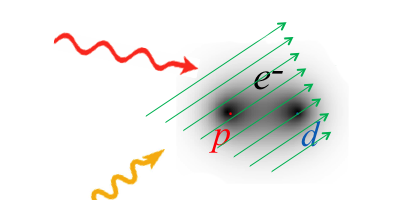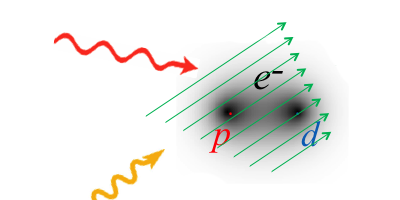Simple Molecules for Accurate Clocks
Are fundamental constants really constant in time and space? Answering this question requires measurements of quantities such as the electron-proton mass ratio with extraordinary accuracy. One method is to look for small changes in molecular vibrational frequencies, but improved measurements will require a new generation of clocks. The cesium clock, with an uncertainty of few parts in , is the best atomic clock suitable for such tests. Writing in Physical Review Letters, Stephan Schiller of the Heinrich Heine University Düsseldorf, Germany, and colleagues propose that clocks based on some of the simplest molecules [molecular hydrogen ( ) and hydrogen-deuterium ( )] may allow researchers to eventually achieve uncertainties at the level, outperforming existing schemes based on atomic transitions.
One-electron hydrogenlike molecules have a key advantage: their properties can be calculated with high accuracy, allowing an optimal selection of molecular transition frequencies. And what may seem like a disadvantage—the complexity of a molecule versus an atom—can actually improve accuracy: a subset of the many molecular transition lines can exhibit very low sensitivity to external electric and magnetic fields. The researchers propose an additional trick: a “composite frequency” method in which a clock’s frequency results from the weighted sum of multiples of these “robust” frequencies. Since the shifts of these transitions due to perturbations have different values, they can cancel out to yield a composite frequency with much-improved accuracy.
The authors calculated that a multiple-transition clock based on and would feature a 60-fold and 3-fold accuracy improvement compared to a single-transition clock, leading to an uncertainty of and less than , respectively. The gain comes at the cost of additional complexity due to the multiple spectroscopic sources needed for the clock’s functioning, but preliminary experiments in the authors’ labs show show setting up such schemes is technologically feasible. – David Voss





